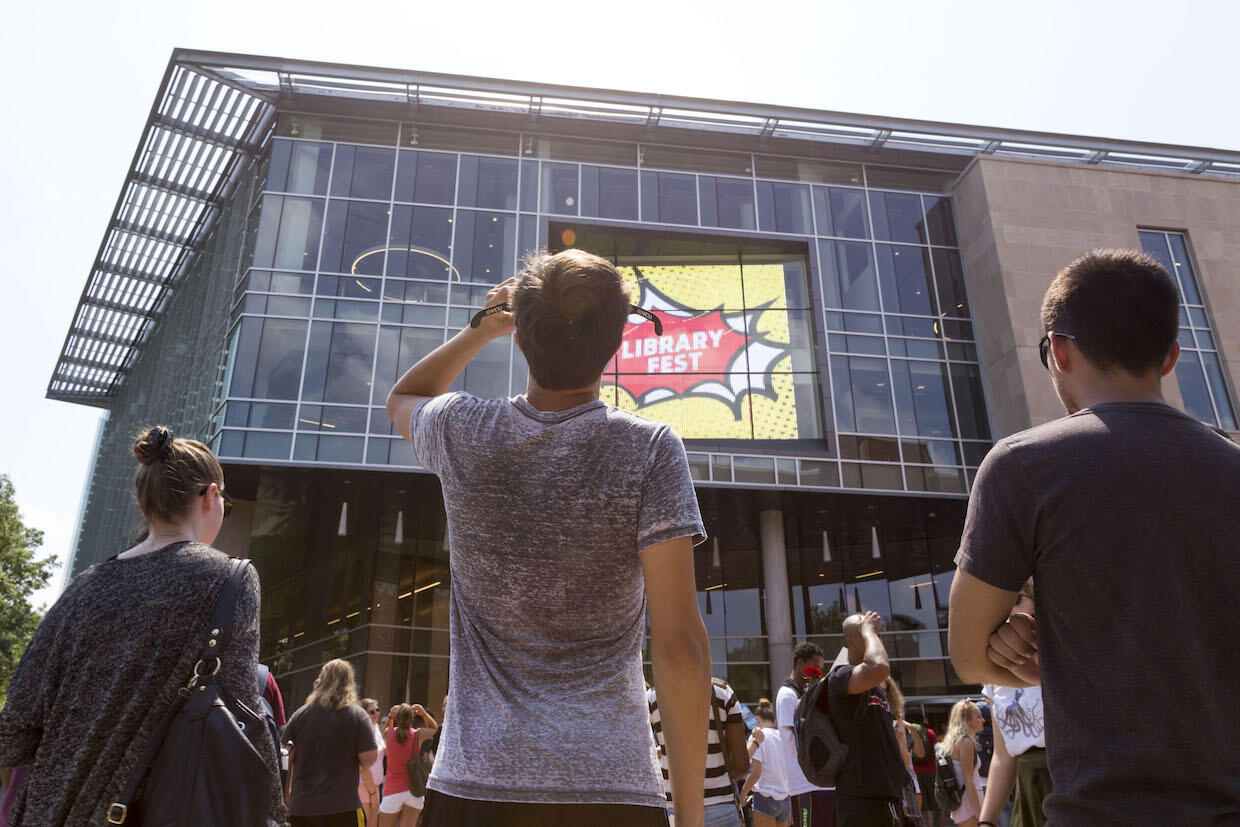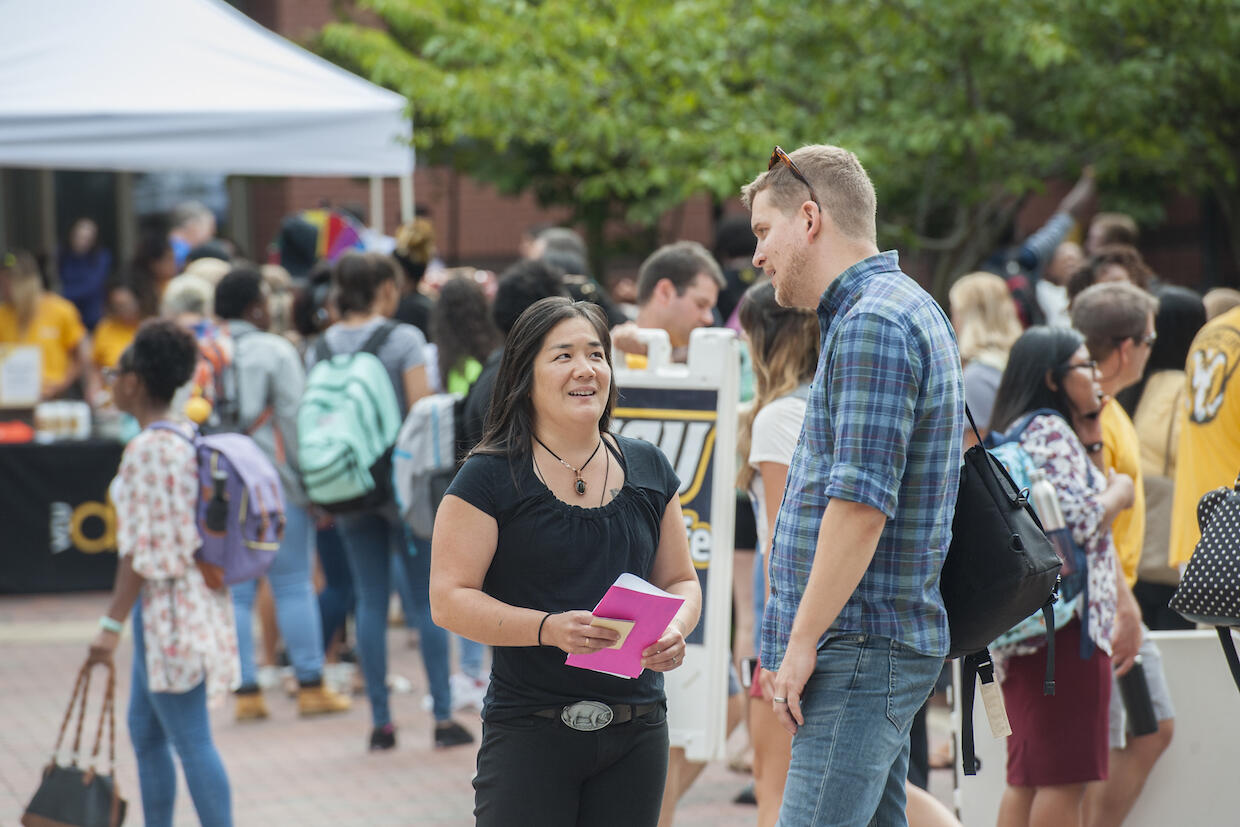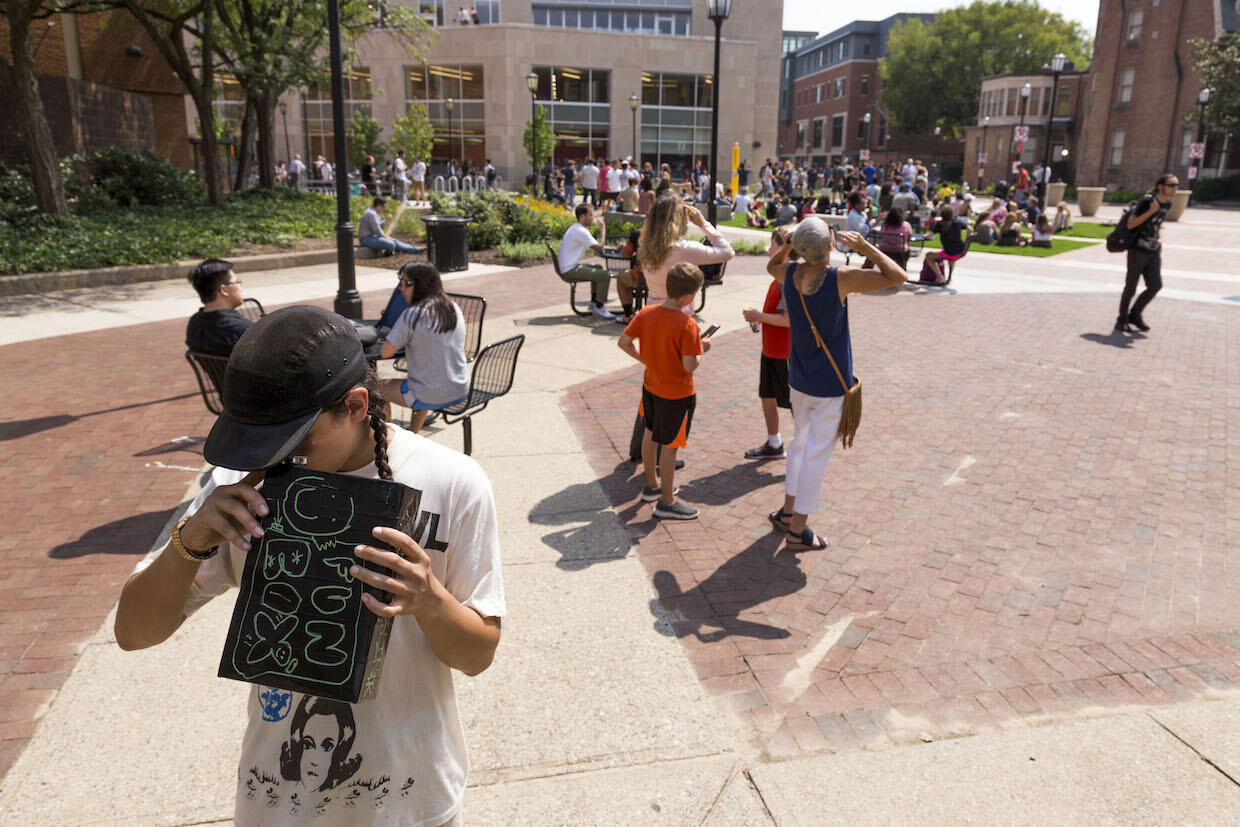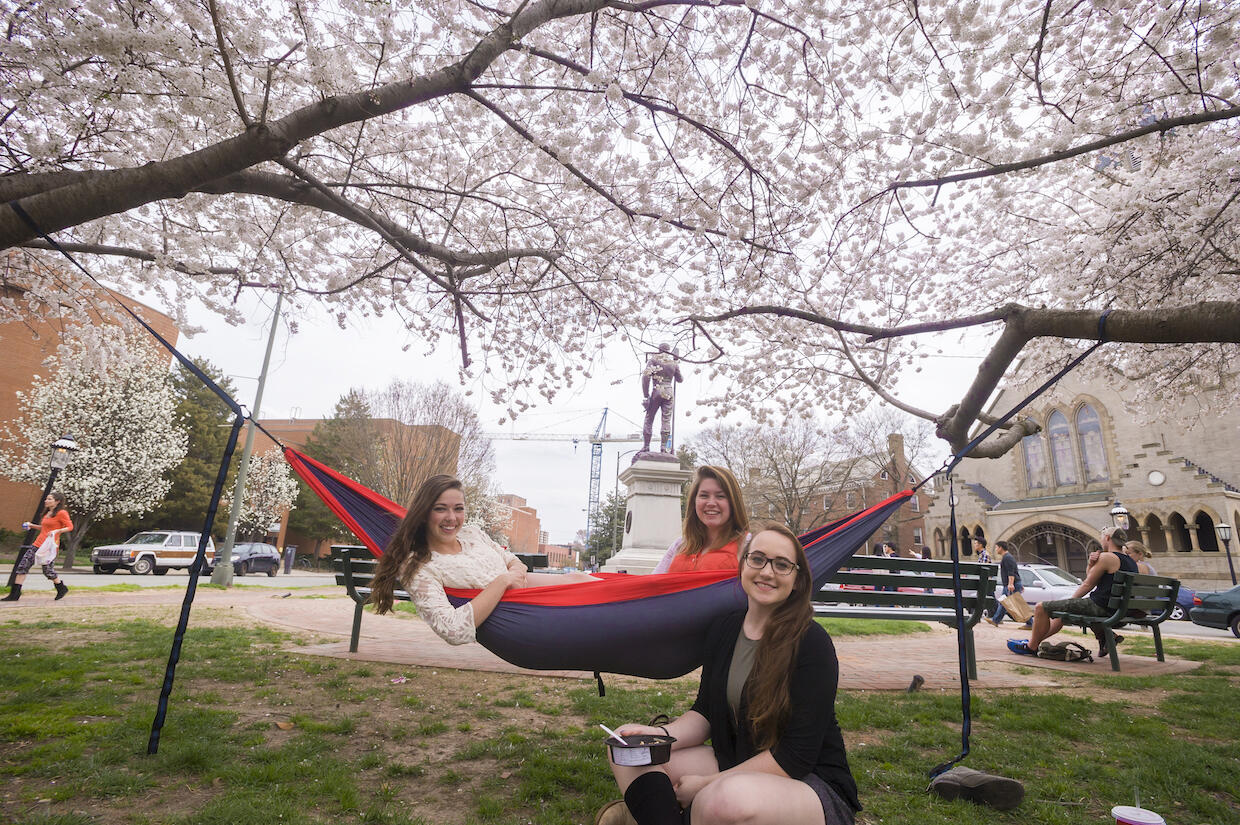
July 23, 2019
‘It needs to tell a story’: How gathering places create thriving college campuses
Share this story
When Mary Cox first arrived at Virginia Commonwealth University in 1992, the intersection of Shafer Street and Cathedral Place — today the heart of the Monroe Park Campus — was entirely asphalt.
“It was just two streets intersecting. And the streets happened to be closed but the fact they were closed was the only thing that made it a pedestrian way,” Cox said. “And fortunately, we had some leaders who supported the development of a campus center.”
Over time, and in phases, the intersection became the Compass — VCU’s iconic brick-paved plaza. Cox, the university architect, was part of the team that transformed this space into one of the busiest gathering places in Richmond, where people socialize, relax, register to vote, protest and hold candlelight vigils.
“It has become a true campus center,” Cox said. “People intuitively recognize that it’s a place where you want to be.”
Cox, who has spent her career in planning and design, is fascinated by this idea of placemaking, which she defines as a space “that a human makes an emotional connection with.”
“It could be that an historic event happened there. It could be a piece of art you are drawn to. It could be the natural environment,” Cox said. “But there is an emotional connection there that etches that place in your memory.”
Cox recently received a grant from the Association of University Architects to study placemaking and its importance in designing thriving campus environments. She spoke with VCU News about her project, VCU’s recently approved master plan and the university’s evolution over the past three decades.

Why is placemaking so important?
It has to do with shaping the public realm. Architects tend to be trained to think about the building as an object in space. Well, a building also has an obligation beyond that. It also shapes outdoor space, which in an urban setting is scarce and valuable. So we need to think carefully about how we shape that outdoor space — we have to make it intentional, high quality, and something that fosters human engagement. I think it needs to tell a story — in our case, it needs to tell the story about the campus.
Are there characteristics that help make certain places more conducive to creating those human connections?
That is exactly what I want to find out, because I believe there are certain characteristics that set the stage for that emotional connection to occur. I’ve started to investigate what resources are out there and the book “Great Streets” by Allan Jacobs looks at the physical proportions of a space and its configuration. How wide is it, how tall is it, how deep is it? Where are the buildings and the trees? And what are the attributes of that place that make it memorable or special? I think [placemaking] has to do with all these things. You have to look at three dimensions and you have to look at the experience. Things like sunlight penetration, landscaping, fauna. The objective of this grant is to acquaint this group — the Association of University Architects — with some of the attributes that make a place special and durable and something that’s going to matter to students.

Universities — even those in rural or suburban environments — often take on the characteristics of cities or thriving urban ecosystems. They have parks, plazas, libraries, food courts — some even have their own post offices. Do you see universities and municipalities borrowing ideas from one another?
Yes, I do see college campuses borrowing ideas from municipalities. Campuses try and knit themselves into the locale. And to me that’s part of placemaking. I remember driving down a limited-access highway in Dallas one time and it was like seeing a cartoon strip where the background repeats every minute or so. It’s the same place. It’s almost surreal because there’s nothing different or unique or special that tells you anything about the culture of the place, the people who live there or the history. It’s an example of “placelessness.” So if that’s placelessness, then what's the opposite? What’s a place? And I think [a place] tells a story about the culture, the people who live there, what makes it unique and special.
Part of placemaking, too, is understanding human behavior. There was a man named William H. Whyte who did time-lapse films of Seagram Plaza in New York in the 1970s. It was a landmark film because it correlated human social behavior to a place. It was very telling because it showed what people preferred by where they chose to sit and congregate. Nobody had ever cataloged that until Whyte did. There was an organization that sprang from his research called the Project for Public Spaces. I interviewed a senior leader there for this project and there seem to be a lot of connections between what they are doing and what university architects want to do.

In your time here, how has the campus evolved, especially regarding placemaking?
VCU has had the underpinnings of high-quality places. We’ve tried to preserve and enhance them. One example would be the Compass. Another is [that] VCU has cut-throughs, narrow passageways between buildings throughout campus. These have the character of being kind of “secret,” private and off the beaten path. A lot of our places are ways to get from point A to point B — streets and sidewalks. Our streetscapes are unique and special because we have a certain language that we use that signals to people that this is a different place — brick pavers on the sidewalks, street trees, benches, streetlights.
One of the exercises they did [for the ONE VCU master plan] was to ask people “what is your favorite place?” The results were very telling. People seek authenticity. As a young university, we don't have the archival place that every alumnus remembers — Virginia Tech has the Drill Field, University of Virginia has the Lawn, College of William & Mary has the Wren Building and the Sunken Garden. And because we’re urban we can’t necessarily just go out and create any kind of space we want. We have to be intentional. I think this is going to be more and more important to students when they go out and choose where they will spend their next four years. Where are there cool spaces to hang out, and what’s alluring about those spaces? How do you relieve pressure and stress? You provide services students need, but you also provide high-quality places. Maybe a place to hold an outdoor yoga class or a place to have a picnic with your friends.
What are some of your favorite places on campus? Is there a placemaking concept in the master plan you are especially excited about?
There are two that are under construction right now — one is the intersection of Shafer and Franklin and the other is Linden and Main. Another recently completed example is we partially closed a section of Linden Street from Floyd to Cathedral and we did the VCU letters. We had no idea how popular it would become. There’s also Howitzer Park. People love that space, especially music students; they go there and practice their instruments under the cherry trees. I love that they do that. It tells a story — it says, “We’re about music.” And it enriches the whole area.
Subscribe to VCU News
Subscribe to VCU News at newsletter.vcu.edu and receive a selection of stories, videos, photos, news clips and event listings in your inbox.












